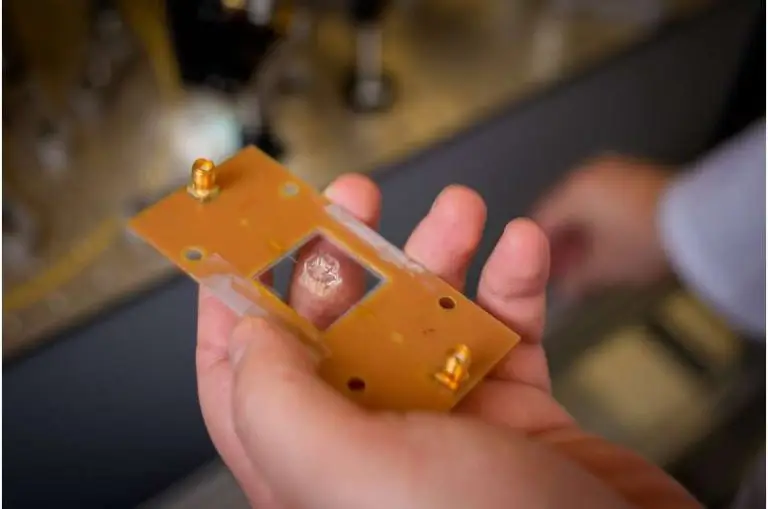Major Breakthrough: New Diamond Sensor Solves Old Quantum Riddle
New Diamond Sensor Solves Old Quantum Riddle

Quantum science, cellular biology, and high-definition television technology converge in the development of new biosensors.
Using hypersensitive quantum sensors inside living cells offers a promising way to track cell growth and diagnose diseases, including cancers, at very early stages.
Some of the most advanced and powerful quantum sensors can be made from tiny pieces of diamond. However, this presents a major challenge: inserting a diamond into a cell and getting it to function properly is extremely difficult.
“All kinds of those processes that you really need to probe on a molecular level, you cannot use something very big. You have to go inside the cell. For that, we need nanoparticles,” said University of Chicago Pritzker School of Molecular Engineering PhD candidate Uri Zvi. “People have used diamond nanocrystals as biosensors before, but they discovered that they perform worse than what we would expect. Significantly worse.”
Zvi is the lead author of a paper published in Proceedings of the National Academy of Sciences that addresses this challenge. Working with researchers from UChicago PME and the University of Iowa, Zvi combined knowledge from cellular biology, quantum computing, traditional semiconductors, and high-definition television technology to develop a groundbreaking quantum biosensor. In the process, the team also helped resolve a long-standing question in the study of quantum materials.

By coating a diamond nanoparticle with a specially engineered shell—a method inspired by QLED television displays—the researchers created a quantum biosensor well-suited for use inside living cells. This approach also revealed a new understanding of how modifying a material’s surface can improve its quantum behavior.
“It’s already one of the most sensitive things on earth, and now they’ve figured out a way to enhance that further in a number of different environments,” said Zvi’s principal investigator, UChicago PME Prof. Aaron Esser-Kahn, a co-author of the paper.
A cell full of diamonds
Qubits embedded in diamond nanocrystals can maintain quantum coherence even when the particles are small enough to be absorbed by a living cell—a helpful comparison is a cell swallowing and processing them without rejecting them. However, as the diamond particles get smaller, the strength of the quantum signal decreases. “It excited people for a while that these quantum sensors can be brought into living cells and, in principle, be useful as a sensor,” said UChicago PME Asst. Prof. Peter Maurer, a co-author of the paper. “However, while these kind of quantum sensors inside of a big piece of bulk diamond have really good quantum properties, when they are in nano diamonds, the coherent properties, the quantum properties, are actually significantly reduced.”
Here, Zvi turned to an unlikely source for inspiration—quantum dot LED televisions. QLED TVs use vibrant fluorescent quantum dots to broadcast in rich, full colors. In the early days, the colors were bright but unstable, prone to suddenly blinking off.
https://scitechdaily.com/new-diamond-sensor-solves-old-quantum-riddle/
